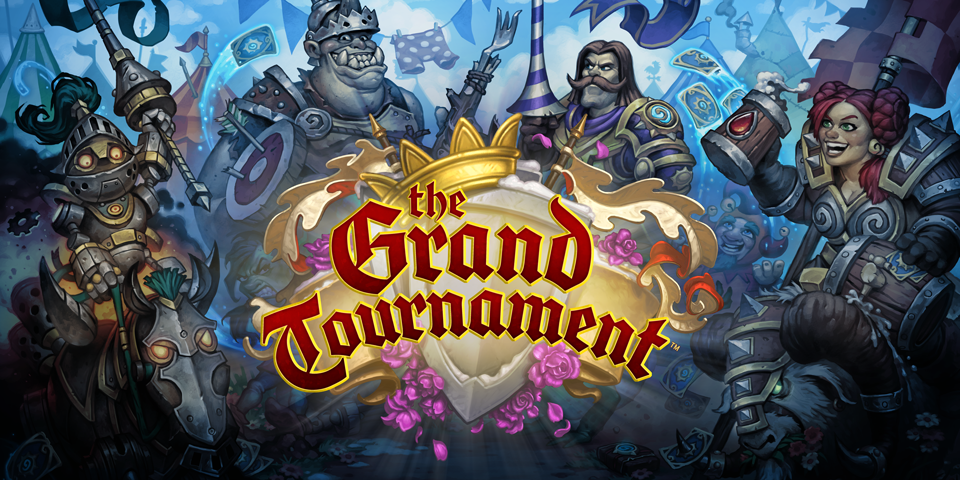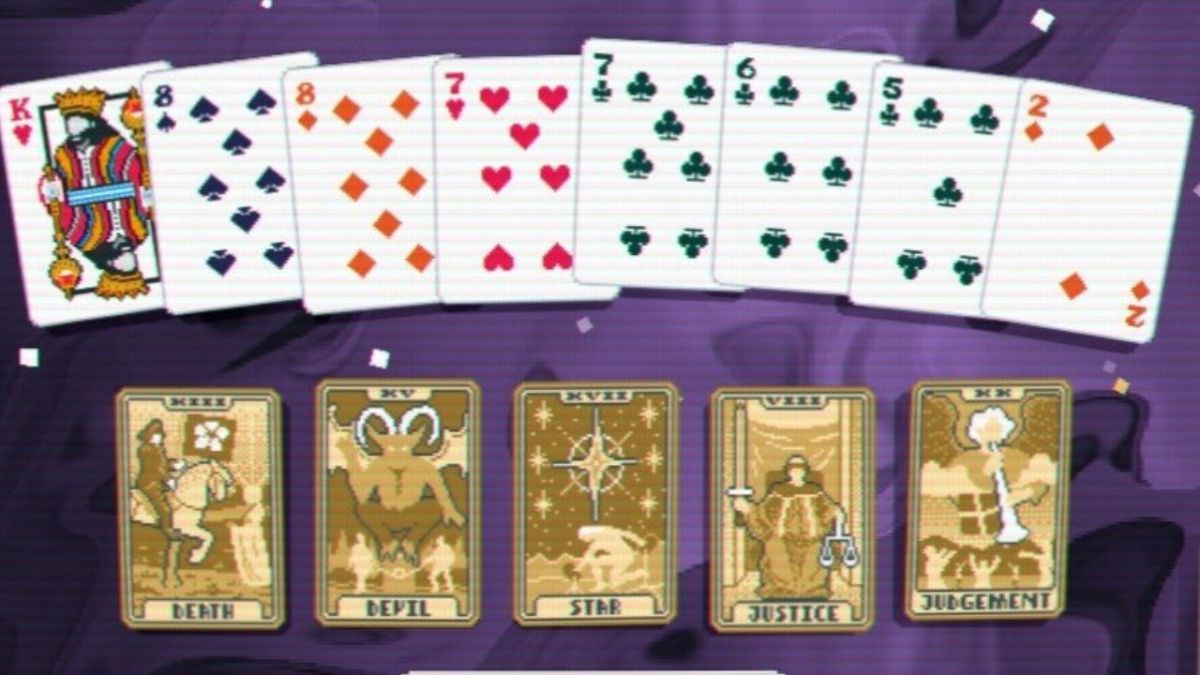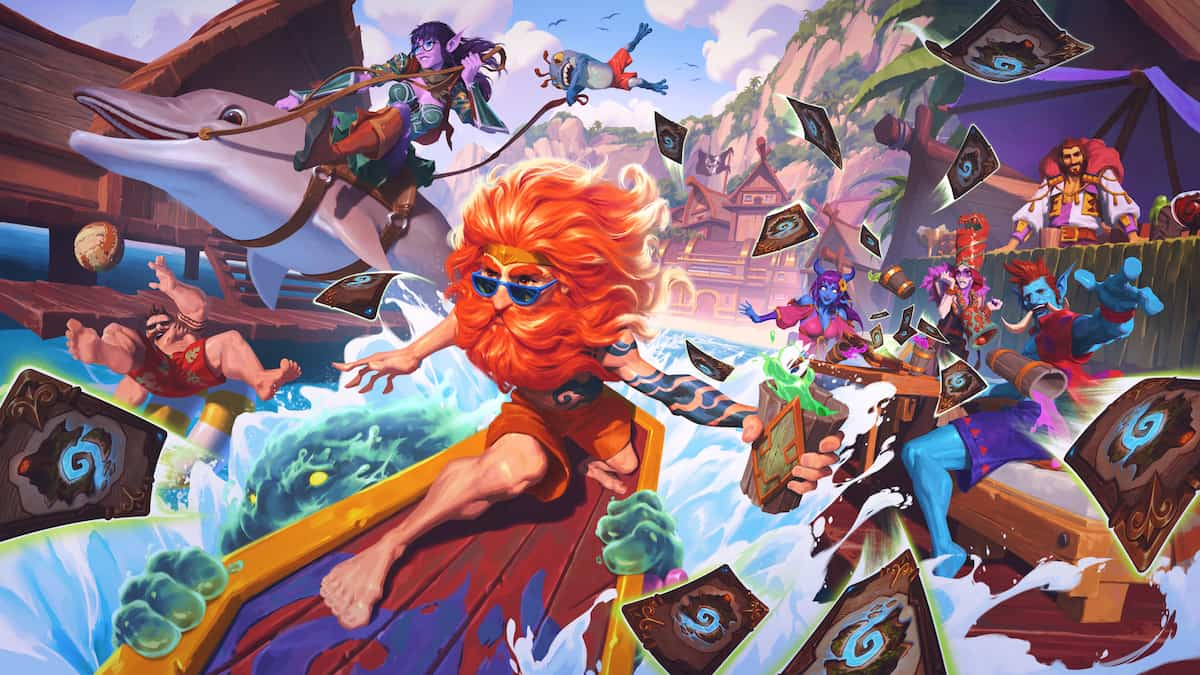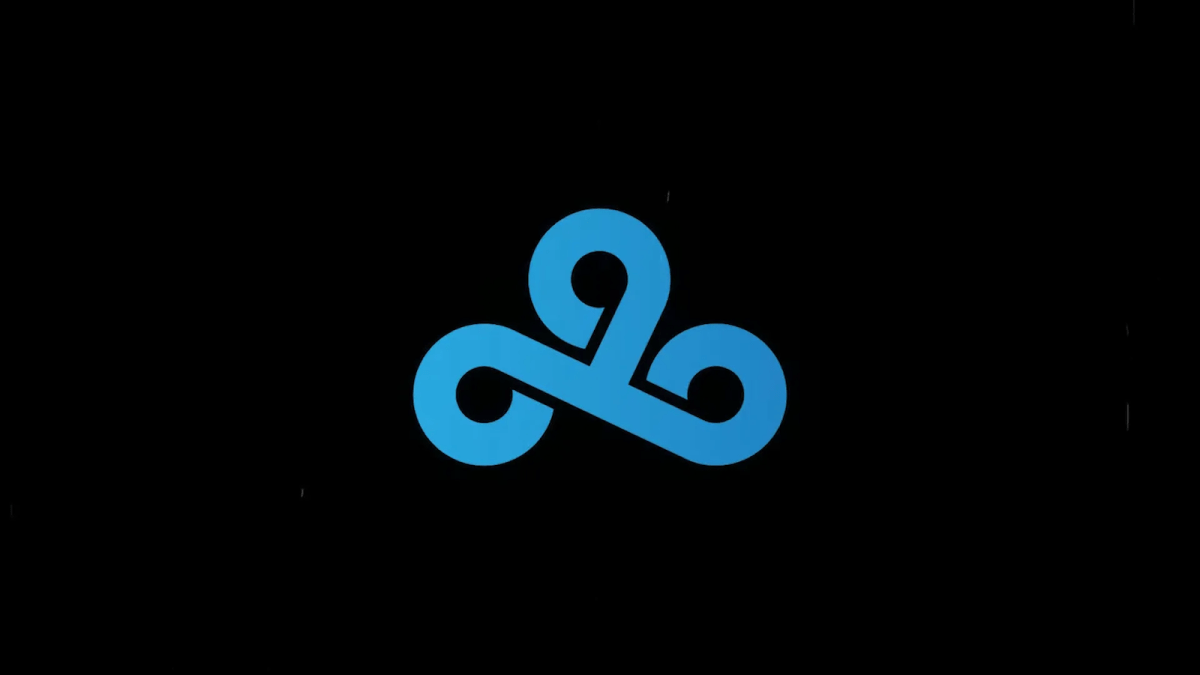Paladins everywhere

Mysterious Challenger is one of those cards that makes a completely new type of deck. If you played the ladder anytime the last few days, you faced at least a couple of Secrets Paladins. They make your life miserable after they drop Mysterious Challenger on turn 6 and five secrets pop out from their deck. Playing around all those secrets is a nightmare. Kezan Mystic does not counter it as you get only one random secret out of four or five. Paladin’s secrets, when played alone, are pretty weak, but when they are played in groups they tend to be pretty strong.
 Competitive Spirit is a new secret that also found its place in the new Paladin deck. It gives +1/+1 buff to your minions at the beginning of your next turn. That can be significant against classes that play one damage clears. Your 2/2 Silver Hand Recruits will become resistible against Warrior’s Whirlwind effects and Unstable Ghouls.
Competitive Spirit is a new secret that also found its place in the new Paladin deck. It gives +1/+1 buff to your minions at the beginning of your next turn. That can be significant against classes that play one damage clears. Your 2/2 Silver Hand Recruits will become resistible against Warrior’s Whirlwind effects and Unstable Ghouls.
Xixo from Team Archon played his version of Secrets Paladin in the Satellite Phase of ATLC last week. He even put two Secretkeepers in his deck. It seems that deck needs some more refinement in order to be played at the highest competitive level, because Xixo did not have a good time with it. He lost four out of five games he played.
As expected, Argent Horserider found its way into aggressive Paladin decks. Chakki, the master of aggro, played two copies in his Paladin deck. If buffed, Argent Horserider will force you to use every removal you have in your hand. The worst thing is that by the time you remove it, he already did his job dealing damage to your face.
 We saw the rise of a new midrange Inspire Paladin. Eloise from Tempo Storm played this deck. It was also played in the European Fireside Gathering Championship a few days ago. The strategy of this deck is to spawn as many Silver Hand Recruits as you can and then buff them with Quartermaster for amazing value. To speed up Recruit production, it plays Silver Hand Regent and Justicar Trueheart. If the game prolongs, your upgraded hero power can be too much for your opponent to handle. By removing two 1/1s each turn, your opponent is wasting damage and removal cards, slowly giving you the advantage as the game progresses. Eloise played two copies of Tuskarr Jouster that is like a better version of Antique Healbot if joust goes in your favor.
We saw the rise of a new midrange Inspire Paladin. Eloise from Tempo Storm played this deck. It was also played in the European Fireside Gathering Championship a few days ago. The strategy of this deck is to spawn as many Silver Hand Recruits as you can and then buff them with Quartermaster for amazing value. To speed up Recruit production, it plays Silver Hand Regent and Justicar Trueheart. If the game prolongs, your upgraded hero power can be too much for your opponent to handle. By removing two 1/1s each turn, your opponent is wasting damage and removal cards, slowly giving you the advantage as the game progresses. Eloise played two copies of Tuskarr Jouster that is like a better version of Antique Healbot if joust goes in your favor.
 Since you are hitting the hero power button quite often, playing cards with Inspire effect makes sense. This is where Murloc Knight comes in play. Every time you use your hero power when Murloc Knight is on board, a random Murloc will be summoned. I did some math: the average Murloc has approximately 2/2.4 body, which means that on average you will get 3/4, 1/1 and 2/2.4 on board for six mana. Combined, this is the 6/7.4 worth of stats split between three targets. You get something like a Boulderfist Ogre, but slightly better, since the stats are split between three targets which makes them harder to remove. When played, Murloc Knight cannot be ignored, because if left on board, it will generate too much value.
Since you are hitting the hero power button quite often, playing cards with Inspire effect makes sense. This is where Murloc Knight comes in play. Every time you use your hero power when Murloc Knight is on board, a random Murloc will be summoned. I did some math: the average Murloc has approximately 2/2.4 body, which means that on average you will get 3/4, 1/1 and 2/2.4 on board for six mana. Combined, this is the 6/7.4 worth of stats split between three targets. You get something like a Boulderfist Ogre, but slightly better, since the stats are split between three targets which makes them harder to remove. When played, Murloc Knight cannot be ignored, because if left on board, it will generate too much value.
Ramp some more
 All Druid decks we saw in ATLC last week had one or two Darnassus Aspirants. Standard Druid decks with one or two Force of Nature, Savage Roar combos work really well if they get extra mana from Wild Growth and Innervates. However, they tend to struggle if they do not get that early boost. Darnassus Aspirant helps Druid to get ramp more consistently which improves desk overall win rate. Xixo played two Chillwind Yetis in his Druid deck as a follow-up play after turn 2 Darnassus Aspirant. He also played one copy of Living Roots. That card gives you flexibility – you can use it for two damage or two 1/1 tokens for extra damage on the following turn, from your Force of Nature, Savage Roar combo.
All Druid decks we saw in ATLC last week had one or two Darnassus Aspirants. Standard Druid decks with one or two Force of Nature, Savage Roar combos work really well if they get extra mana from Wild Growth and Innervates. However, they tend to struggle if they do not get that early boost. Darnassus Aspirant helps Druid to get ramp more consistently which improves desk overall win rate. Xixo played two Chillwind Yetis in his Druid deck as a follow-up play after turn 2 Darnassus Aspirant. He also played one copy of Living Roots. That card gives you flexibility – you can use it for two damage or two 1/1 tokens for extra damage on the following turn, from your Force of Nature, Savage Roar combo.
Hyped played two Savage Combatants for the same purpose. He won both games he played with Druid last week, but he never played them. When compared to Chilwind Yeti, Savage Combatant dies from Truesilver Champion or Death’s Bite and trades badly with Piloted Shredder, but it gives a nice removal tool by boosting your hero power.
New kind of Zoolock
 Eloise played the new version of Zoo Warlock. This version seems a little more aggressive than the standard Demon Zoo Warlock with Dr. Boom and Mal’Ganis. It has a low curve which ends at 5 mana with two Doomguards. This deck contains the following TGT cards: one copy of Flamme Juggler, two Lance Carriers, two Wrathguards and two Fists of Juraxxus. I do not know why she decided to remove Knife Juggler and play Flamme Juggler instead. Knife Juggler is an amazing card in aggressive decks that run a bunch of low-cost minions. I am sure that on average it deals more damage than Flamme Juggler. Lance Carriers permanently buff your other minions. I guess their main objective is to buff Shieldbearers that are also played in this deck. Otherwise, I do not see a reason why would you play them. If your goal is to kill opponents as soon as possible, Leper Gnome fits much better in that one mana slot. Wrathguard has high attack value which goes well with the aggressive nature of the deck. Two copies of Fist of Juraxxus are there for extra burst when you try to finish your opponent with Soulfire or Doomguard.
Eloise played the new version of Zoo Warlock. This version seems a little more aggressive than the standard Demon Zoo Warlock with Dr. Boom and Mal’Ganis. It has a low curve which ends at 5 mana with two Doomguards. This deck contains the following TGT cards: one copy of Flamme Juggler, two Lance Carriers, two Wrathguards and two Fists of Juraxxus. I do not know why she decided to remove Knife Juggler and play Flamme Juggler instead. Knife Juggler is an amazing card in aggressive decks that run a bunch of low-cost minions. I am sure that on average it deals more damage than Flamme Juggler. Lance Carriers permanently buff your other minions. I guess their main objective is to buff Shieldbearers that are also played in this deck. Otherwise, I do not see a reason why would you play them. If your goal is to kill opponents as soon as possible, Leper Gnome fits much better in that one mana slot. Wrathguard has high attack value which goes well with the aggressive nature of the deck. Two copies of Fist of Juraxxus are there for extra burst when you try to finish your opponent with Soulfire or Doomguard.
 Gormok the Impaler deals 4 damage if you have four or more minions on board. It fits well in Zoo Warlock decks, because they fill the board easily with low-cost minions and Imp-losion. Forsen played Gormok in his version of Zoo in ATLC last week. There was a funny misplay by Forsen when he wanted to play Gormok against Firebat. For a moment he forgot he needs four minions on board for Battlecry effect so he traded one, leaving three on the board. His face expression when he realized what he did was just hilarious. That misplay almost cost his team a victory.
Gormok the Impaler deals 4 damage if you have four or more minions on board. It fits well in Zoo Warlock decks, because they fill the board easily with low-cost minions and Imp-losion. Forsen played Gormok in his version of Zoo in ATLC last week. There was a funny misplay by Forsen when he wanted to play Gormok against Firebat. For a moment he forgot he needs four minions on board for Battlecry effect so he traded one, leaving three on the board. His face expression when he realized what he did was just hilarious. That misplay almost cost his team a victory.
Slight changes
 Two copies of this cute Walrus were played in both Mech Shaman decks we saw last week in ATLC. In the Mech Shaman version that played Fel Reavers, they replaced Spider Tanks and in the version with Fireguard Destroyers, they replaced Flametongue Totems. Shaman players seem to value this card pretty highly. In three out of eight cases, it returns extremely good value. If dice rolls on Flametongue you get 2 extra damage the same turn, Manatide draws you a card and Totem Golem is basically a Spider Tank with extra 3/2 body of Tuskarr Totemic… Moreover, in each of these cases your opponent has one extra target to remove. Mech Shaman is an aggressive deck that goes face almost every time. If Tuscarr Totemic attacks face once or gets removed my Truesilver Champion or Death’s Bite, it basically has the same value as Spider Tank, but if it spawns a good totem then it is much better.
Two copies of this cute Walrus were played in both Mech Shaman decks we saw last week in ATLC. In the Mech Shaman version that played Fel Reavers, they replaced Spider Tanks and in the version with Fireguard Destroyers, they replaced Flametongue Totems. Shaman players seem to value this card pretty highly. In three out of eight cases, it returns extremely good value. If dice rolls on Flametongue you get 2 extra damage the same turn, Manatide draws you a card and Totem Golem is basically a Spider Tank with extra 3/2 body of Tuskarr Totemic… Moreover, in each of these cases your opponent has one extra target to remove. Mech Shaman is an aggressive deck that goes face almost every time. If Tuscarr Totemic attacks face once or gets removed my Truesilver Champion or Death’s Bite, it basically has the same value as Spider Tank, but if it spawns a good totem then it is much better.
 Gaara played King’s Elekks and Bear Traps in his version of midrange Hunter. King’s Elekk is a solid two mana minion that has a chance to draw one card. Bear Trap can surprise opponents. If they make the mistake of producing it before your turn 4, you can punish them really hard with Hountmaster play. Gaara had a positive 2-1 score with this deck last week. We will see if he made some more tweaks to it in the Live Finale of ATLC.
Gaara played King’s Elekks and Bear Traps in his version of midrange Hunter. King’s Elekk is a solid two mana minion that has a chance to draw one card. Bear Trap can surprise opponents. If they make the mistake of producing it before your turn 4, you can punish them really hard with Hountmaster play. Gaara had a positive 2-1 score with this deck last week. We will see if he made some more tweaks to it in the Live Finale of ATLC.






Published: Aug 31, 2015 10:06 pm